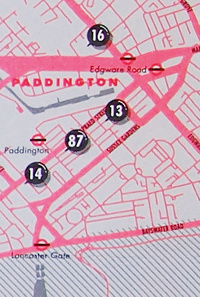Urban Analytics Sessions @ the AAG 2016
As part of the Symposium on Human Dynamics Research we have organized three great sessions sessions relating to Urban Analytic which will take place on Thursday, 3/31/2016, from 1:20 PM – 7:00 PM in Union Square 18, Hilton Hotel, 4th Floor.
Session Description: A deluge of new data created by people and machines is changing the way that we understand, organize and model urban spaces. New analytics are required to make sense of these data and to usefully apply findings to real systems. This session seeks to bring together quantitative or mixed methods papers that develop or use new analytics in order to better understand the form, function and future of urban systems. We invite methodological, theoretical and empirical papers that engage with any aspect of urban analytics. Topics include, but are not limited to:
- New methodologies for tackling large, complex or dirty data sets;
- Case studies involving analysis of novel or unusual data sources;
- Policy analysis, predictive analytics, other applications of data;
- Intensive modelling or simulation applied to urban areas or processes;
- Individual-level and agent-based models (ABM) of geographical systems;
- Validating and calibrating models with novel data sources;
- Ethics of data collected en masse and their use in simulation and analytics.
Organizers:
3445 Symposium on Human Dynamics Research: Urban Analytics (I)
Thursday, 3/31/2016, from 1:20 PM – 3:00 PM in Union Square 18, Hilton Hotel, 4th Floor
Chair:Nick Malleson
Talks:
Discussant: Mark Birkin
3545 Symposium on Human Dynamics Research: Urban Analytics (II)
Thursday, 3/31/2016, from 3:20 PM – 5:00 PM in Union Square 18, Hilton Hotel, 4th Floor
Chair: Paul Longley
Talks:
3645 Symposium on Human Dynamics Research: Urban Analytics (III)
Thursday, 3/31/2016, from 5:20 PM – 7:00 PM in Union Square 18, Hilton Hotel, 4th Floor
Chair: Andrew Crooks
Talks:
- *Kostas Cheliotis
- *Kurtis Garbutt, Claire Ellul and Taku Fujiyama
- *Robert Babin, Dawn Parker, Andre Antanaitis, Jeff Casello, Pedram Fard, Yu Huang, Xiongbing Jin, Markus Moos, Erica Ogden, Xinyue Pi, Veronica Sullivan, Filiz Tamer, Jinny Tran and Kevin Yeung
- *Yunchao Qu and Xuesong Zhou
Discussant: Andrew Crooks
Continue reading »











